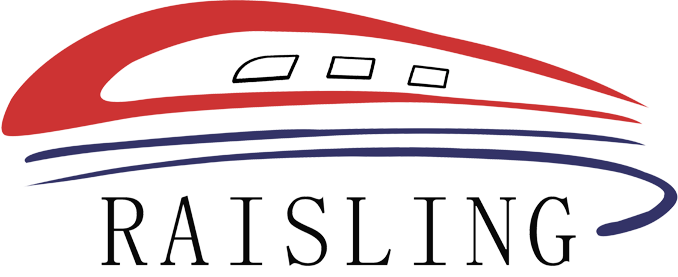Addressing Common Myths About Rail Fasteners: Unveiling the Truth Behind Essential Rail Components
Jun 09,2025
Addressing Common Myths About Rail Fasteners Table of Contents 1. Introduction to Rail Fasteners 2. Common Myths About Rail Fasteners 2.1 Myth 1: Rail Fasteners Are Interchangeable 2.2 Myth 2: Rail Fasteners Are Only for Heavy Rail 3. The Importance of Rail Fasteners in Transportation 4. Types of Rail Fasteners and Their Functions 5

Addressing Common Myths About Rail Fasteners
Table of Contents
- 1. Introduction to Rail Fasteners
- 2. Common Myths About Rail Fasteners
- 3. The Importance of Rail Fasteners in Transportation
- 4. Types of Rail Fasteners and Their Functions
- 5. Design Considerations for Rail Fasteners
- 6. Maintenance Practices for Rail Fasteners
- 7. Conclusion
- 8. Frequently Asked Questions
1. Introduction to Rail Fasteners
Rail fasteners play a pivotal role in the stability and safety of railway systems. These essential components secure the rails to the sleepers, providing a reliable foundation for trains to traverse. Despite their importance, there are several misconceptions that may lead to misunderstandings about their functionality and design. This article aims to address and dispel these myths, fostering a better understanding of rail fasteners and their critical role in rail infrastructure.
2. Common Myths About Rail Fasteners
Understanding the common myths surrounding rail fasteners is crucial for both industry professionals and enthusiasts. Let's take a closer look at some prevalent misconceptions.
2.1 Myth 1: Rail Fasteners Are Interchangeable
One of the most widespread misconceptions is that all rail fasteners are interchangeable. In reality, rail fasteners are designed with specific dimensions and properties tailored to various railway systems. Factors such as rail size, type of sleeper, and environmental conditions dictate the selection of fasteners. Using the wrong type can lead to serious safety hazards, including track misalignment and increased wear on rail components.
2.2 Myth 2: Rail Fasteners Are Only for Heavy Rail
Another myth is that rail fasteners are only necessary for heavy rail applications. While it's true that heavy rail systems require robust fasteners, light rail and tram systems also benefit significantly from the correct types of fasteners. Light rail systems often operate in urban environments where stability is crucial, especially during peak traffic periods. Thus, the need for appropriate fasteners extends beyond heavy rail applications.
3. The Importance of Rail Fasteners in Transportation
Rail fasteners are integral to the overall performance of railway systems. They ensure that tracks remain aligned under varying stress conditions, including temperature fluctuations and heavy loads. The importance of rail fasteners can be summarized as follows:
- **Safety**: Properly installed fasteners minimize the risk of derailment by maintaining track alignment.
- **Durability**: High-quality materials ensure fasteners can withstand environmental factors such as moisture, corrosion, and extreme temperatures.
- **Economic Efficiency**: Investing in quality rail fasteners reduces maintenance costs over time, leading to lower overall operational expenses.
4. Types of Rail Fasteners and Their Functions
Various types of rail fasteners are utilized across different railway systems. Understanding these types is vital for selecting the appropriate fasteners for specific applications.
4.1 Clip Fasteners
Clip fasteners are among the most commonly used in railway applications. They securely hold the rails to the sleepers and allow for expansion and contraction due to temperature changes. There are different clip designs, including elastic clips, which enhance the elasticity and provide better grip.
4.2 Bolted Fasteners
Bolted fasteners consist of a bolt, nut, and washer, providing a robust connection between the rail and sleeper. These fasteners are particularly useful in heavy rail applications or where high stress is expected.
4.3 Screw Fasteners
Screw fasteners are often used in wooden sleepers and provide a secure hold for the rail. They allow for easy installation and removal, making them a practical choice for maintenance activities.
4.4 Rail Pads
While not fasteners in the traditional sense, rail pads work in conjunction with fasteners to reduce vibrations and noise. They help distribute loads evenly across the sleeper, enhancing the lifespan of both the fasteners and the track.
5. Design Considerations for Rail Fasteners
The design of rail fasteners involves numerous considerations to ensure optimal performance. Key factors include:
- **Material Selection**: Fasteners are typically made from high-strength steel or other durable materials resistant to corrosion and wear.
- **Size and Shape**: The dimensions of the fasteners must be compatible with the rail and sleeper design to maintain proper alignment and support.
- **Environmental Resistance**: Fasteners should be designed to withstand specific environmental conditions, such as exposure to moisture or extreme temperatures.
6. Maintenance Practices for Rail Fasteners
Proper maintenance of rail fasteners is crucial to ensure their longevity and effectiveness. Here are some recommended practices:
- **Regular Inspections**: Routine checks should be conducted to identify any signs of wear, corrosion, or misalignment.
- **Lubrication**: Applying lubricant to moving parts helps reduce friction and wear, extending the lifespan of fasteners.
- **Replacement**: Fasteners that show significant wear or damage should be replaced immediately to prevent safety hazards.
7. Conclusion
Addressing the myths surrounding rail fasteners is essential for understanding their critical role in rail infrastructure. By dispelling misconceptions and highlighting their importance, we can foster a safer and more efficient rail transportation system. Whether one is involved in the design, maintenance, or operation of rail systems, understanding the truth about rail fasteners is vital for ensuring safety and performance.
8. Frequently Asked Questions
8.1 What are rail fasteners made of?
Rail fasteners are typically made from high-strength steel or other corrosion-resistant materials to ensure durability and longevity.
8.2 How often should rail fasteners be inspected?
It is recommended that rail fasteners be inspected regularly, ideally every few months, to identify wear and ensure proper alignment.
8.3 Can I use the same fasteners for different types of rail?
No, rail fasteners are not interchangeable. Each type is designed for specific rail sizes and configurations, and using the wrong type can lead to safety issues.
8.4 What is the role of rail pads in fastener systems?
Rail pads help reduce vibrations and noise while distributing loads evenly across the sleeper, enhancing the performance of rail fasteners.
8.5 Are there eco-friendly options for rail fasteners?
Yes, some manufacturers produce rail fasteners using sustainable materials and processes, contributing to a greener railway infrastructure.
By addressing these common myths about rail fasteners, we hope to provide clarity and insight into their critical role in rail transportation systems.
Previous:
Recommended
There is one sheet production line and two high-precision engraving machines, with an annual production capacity of 6 million railway special height adjustment pads.
Electrostatic spraying workshop
There is one electrostatic spray equipment production line and one spray paint production line, with an annual production capacity of 10,000 tons.
Contact Us


